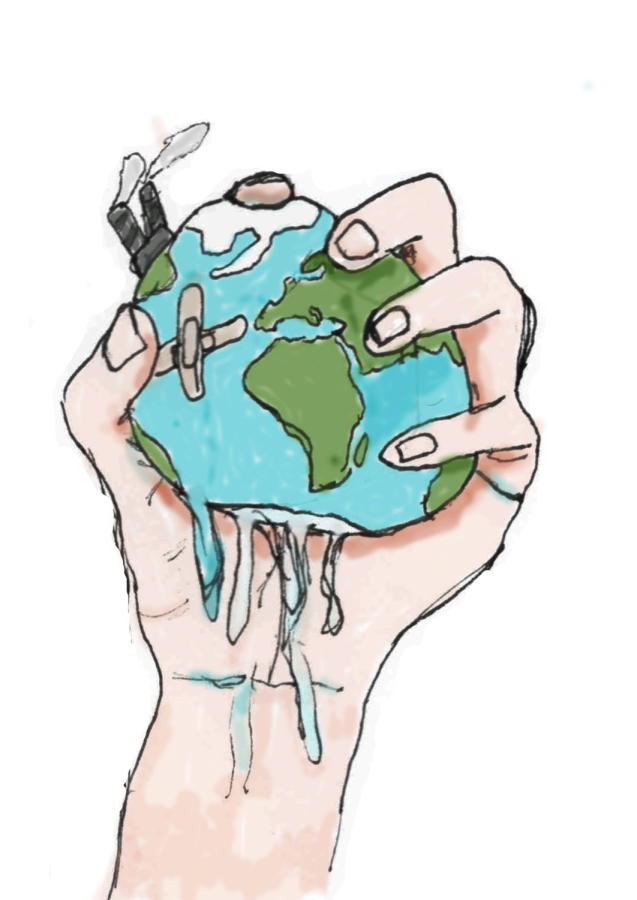Environment slowly dies
Grassroots activism fuels efforts to conserve nature’s beauty.
Dec 5, 2018
From the conservation efforts set in the forested foothills to the pollution police in the lowlands by the bay, the San Francisco Bay Area is steep in environmental activism history.
Since the early 1960s, concerns over air, sea and land pollution from the newly coined environmentalists spearheaded a movement — which has shaped a generation and a fight for environmental justice.
“Even though governments make environmental laws and grant permits for possible pollution, communities are the ones who grant permission,” Sunflower Alliance volunteer Janet Johnson said.
“When communities organize, they can achieve a lot. There’s a quote from Joan Baez who says ‘action is the antidote of despair.’ It’s a very useful mantra.”
Over decades, this ecological mindset fueled the growth of grassroots activism that aided in the creation of Save The Bay, Earth Day, the Environmental Protection Agency and Greenpeace.
But much like the murky battles of the Santa Barbara Oil Blowout of 1969 and subsequent creation of Earth Day, pivotal moments in the environmental movement can only be short-lived.
They are badges of honor won and worn by activists through public protesting, legal action and taking a moral stance.
This work has established a strong foundation for the future of activism.
“It’s totally David and Goliath because you are dealing with the most powerful industry on the planet, both in terms of money and political power,” Johnson said. “When you beat these people (fossil fuel corporations), it’s like — yes, we can do this shit, and then you go on to the next one.”
Johnson, who retired from her job in 2015 and joined the Sunflower Alliance, said she volunteers because she does not want to leave a crappy world for the generations to come.
“It is a ton of work and it takes a certain kind of commitment,” she said. “There’s a lot going on below the surface that doesn’t make it to the mainstream press.”
Like most grassroots activists or nonprofit organizations, the fight starts within the local minority communities who generally feel the brunt of environmental injustice.
Before organizing a community meeting, activists put together a plan of action, with various aspects including legal, canvassing or moral stance.
“It is not a mystery or a secret that the communities that are most affected by refining, transporting and even extracting fossil fuel are low income communities of color,” Johnson said. “These people already have a lot on their shoulders and they are not the kind of people that will call a congressperson.”
Johnson said because of the five refineries, including Chevron and Phillips 66, that encapsulate the Bay Area and Carquinez Strait, there is no lack of environmental issues.
“You have to get the community behind you by expressing concern and relaying facts that are detrimental to environmental protection and climate change,” Johnson said. “It’s something that absolutely needs to be done.”
In November, the White House, along with 13 federal agencies, released the National Climate Assessment, which highlights the already devastating impacts climate change is having and what is to expect by 2050.
According to the 1,656-page report, “The impacts of climate change are already being felt in communities across the country. More frequent and intense extreme weather and climate-related events, as well as changes in average climate conditions, are expected to continue to damage infrastructure, ecosystems and social systems that provide essential benefits to communities.”
The report continues, “Rising air and water temperatures and changes in precipitation are intensifying droughts, increasing heavy downpours, reducing snow pack and causing declines in surface water quality.”
Using last year’s disastrous Carr Fire near Redding, California as an example, the report states that fire and other environmental horrors will be more common and more frequent across the country.
The threat worsens if fossil fuel consumption, which make up 85 percent of U.S. emissions, isn’t reduced.
Sunflower Alliance volunteer Jean Tepper said the report that was released did not say anything that scientists have not already been saying.
“Every year, they say, ‘Oh my god it’s so much worse than we thought.’ Every year for 20 years, there’s a report that says it’s so much worse than we thought,” Tepper said. “I don’t actually read a lot of it because I already know what the crisis is — I would rather focus on what we can do about it.”
Tepper said the effect of humans on the planet has been poison, destroying huge amounts of the live systems that humanity is depend on.
“In theory, all the technology is available to change the world to 100 percent clean energy. The problem is that a lot of very power companies have a vested interest in keeping it how it is,” she said. “The fossil fuel companies, international shipping companies and the agri-business, they have a lot of money and political power.”
Tepper said its members of the community and the movement that’s really growing.
“I can’t understand why anyone would think there isn’t a need for environmental activism.”


